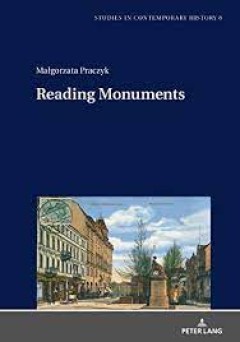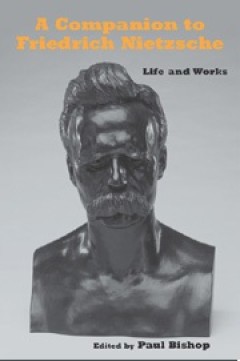Filter by

Prosthetic Body Parts in Nineteenth-Century Literature and Culture
This open access book investigates imaginaries of artificial limbs, eyes, hair, and teeth in British and American literary and cultural sources from the nineteenth and early twentieth century. Prosthetic Body Parts in Nineteenth-Century Literature and Culture shows how depictions of prostheses complicated the contemporary bodily status quo, which increasingly demanded an appearance of physical …
- Edition
- 1
- ISBN/ISSN
- 978-3-030-78589-5
- Collation
- oer.unej.ac.id
- Series Title
- Palgrave Studies in Nineteenth-Century Writing and Culture
- Call Number
- -

Neoromantik der Jahrhundertwende = Transformationen eines romantischen Erzäh…
Dieses Open-Access-Buch beschreibt die rege Wiederaufnahme des Romantischen in der literarischen Landschaft um 1900. Es zeichnet die vergessene Diskursgeschichte einer sogenannten ‚Neuromantik‘ nach, um anschließend zu analysieren, was genau sich in diesen Texten im Vergleich zur historischen Romantik verändert hat. Die Neoromantik der Jahrhundertwende lässt sich damit als eine folgenrei…
- Edition
- 1
- ISBN/ISSN
- 9783662662892
- Collation
- XVII, 392 hlm; ill., lamp.,
- Series Title
- 2
- Call Number
- -

Corps et capital dans le roman français du XIXe siècle
Depuis Pierre Bourdieu, nous savons que le corps forme un capital culturel et social incorporé. Il est marchandise et moyen de production, signe d’appartenance à une classe sociale, un lieu où se négocient les relations de sexe, de genre et de pouvoir ou un prétexte à des exclusions sociales et au racisme. Le corps est objet de châtiments, de sanctions et de contrôle social, support d…
- Edition
- 1
- ISBN/ISSN
- 978-3-7329-9032-0
- Collation
- 500
- Series Title
- Literaturwissenschaft
- Call Number
- -

Prosthetic Body Parts in Nineteenth-Century Literature and Culture
This open access book investigates imaginaries of artificial limbs, eyes, hair, and teeth in British and American literary and cultural sources from the nineteenth and early twentieth century. Prosthetic Body Parts in Nineteenth-Century Literature and Culture shows how depictions of prostheses complicated the contemporary bodily status quo, which increasingly demanded an appearance of physical …
- Edition
- 1
- ISBN/ISSN
- 978-3-030-78589-5
- Collation
- -
- Series Title
- -
- Call Number
- XV, 283

Reading Monuments A Comparative Study of Monuments in Poznań and Strasbourg…
This book tells the story of monuments in two cities that share a parallel and turbulent history: Strasbourg and Poznan. With the Franco-Prussian War begins the well-known story of the destruction and erection of memorials. This book not only explains the mechanisms related to how memorials have functioned in the past, but also contributes to our understanding of current modes of their percepti…
- Edition
- -
- ISBN/ISSN
- 9783653071481
- Collation
- -
- Series Title
- -
- Call Number
- -

A Companion to Friedrich Nietzsche: Life and Works
Nietzsche looms over modern literature and thought; according to Gottfried Benn, 'everything my generation discussed, thought through innerly; one could say: suffered; or one could even say: took to the point of exhaustion - all of it had already been said . . . by Nietzsche; all the rest was just exegesis.' Nietzsche's influence on intellectual life today is arguably as great; witness the vari…
- Edition
- -
- ISBN/ISSN
- 9781571137739
- Collation
- -
- Series Title
- -
- Call Number
- -

Carmen Abroad: Bizet's Opera on the Global Stage
From the 'old world' to the 'new' and back again, this transnational history of the performance and reception of Bizet's Carmen – whose subject has become a modern myth and its heroine a symbol – provides new understanding of the opera's enduring yet ever-evolving and resituated presence and popularity. This book examines three stages of cultural transfer: the opera's establishment in the r…
- Edition
- -
- ISBN/ISSN
- -
- Collation
- -
- Series Title
- -
- Call Number
- -
 Computer Science, Information & General Works
Computer Science, Information & General Works  Philosophy & Psychology
Philosophy & Psychology  Religion
Religion  Social Sciences
Social Sciences  Language
Language  Pure Science
Pure Science  Applied Sciences
Applied Sciences  Art & Recreation
Art & Recreation  Literature
Literature  History & Geography
History & Geography